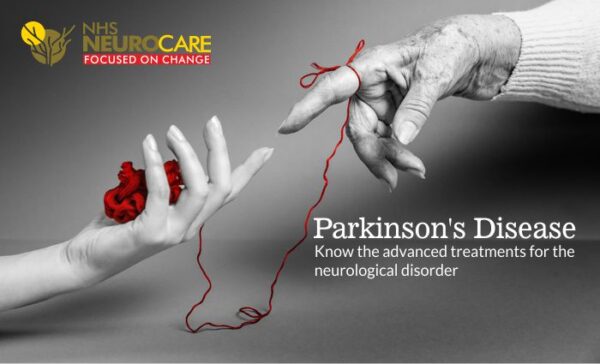What is Parkinson’s disease?
Parkinson’s disease (PD), named after Dr. James Parkinson 200 years earlier, is a neurodegenerative movement disorder that occurs due to the loss of dopaminergic neurons in the brain, presenting motor symptoms such as bradykinesia (slowness of movement), rigidity, rest tremor (occurs when the muscle is relaxed such as when the hands are resting on the lap), and postural instability (inability to balance during standing or movements).
What are the limitations of the current treatments?
Current treatments such as Levodopa are based on the restoration of dopaminergic tone which was otherwise hampered due to the loss of dopaminergic neurons. Non-dopamine-dependent motor features such as freezing of gait and cognitive impairment are not addressed by the current treatments.
What are the recent advances in treatments?
Understanding PD at the molecular level helped to develop the targeted immunotherapies that act at the molecular level. There are treatments that control the symptoms of PD without side effects, slow the pathology of PD, reduce neuronal loss, and attenuate the disease course.
Parkinson’s disease is a progressive disorder that affects the nervous system and the parts of the body controlled by the nerves. Symptoms start slowly. The first symptom may be a barely noticeable tremor in just one hand. Tremors are common, but the disorder may also cause stiffness or slowing of movement.
Let us understand alternate PD mechanisms and the relevant recent advanced treatments in detail …….
- Immunotherapy
- PD mechanism – the presence of abnormal aggregates of a disease-causing protein called
- Synuclein (infectious) triggering mitochondrial damage and oxidative stress
- Treatment – Monoclonal antibodies such as Prasinezumab degrade
- Synuclein thus preventing it from infecting neighboring cells.
- Repurposing Drugs (these are drugs currently used for other disorders but are clinically found useful to treat Parkinson’s disease)
- Elevation of urate levels, (Inosine is the drug repurposed)
- Inhibition of neuronal death, reduced oxidative stress (Exenatide which is otherwise used in type 2 diabetes mellitus)
- Neuroprotection, (Isradipine which is otherwise a calcium channel blocker and an anti-hypertensive)
- Iron chelation (deferiprone)
- Mitochondrial agonists such as Urso deoxycholic acid (otherwise used for liver disease)
- Antioxidants such as N-acetyl cysteine and glutathione.
- Targeting non-dopaminergic neurotransmitters systems responsible for PD.
- Safinamide – an inhibitor of a neurotransmitter called monoamine oxidase (MAO)
- Opicapone – COMT (catechol-o-methyl-transferase) inhibitor and ensures COMT
- Rivastigmine & Donepezil – ensures acetylcholine
- Methylphenidate & Atomoxetine – ensure norepinephrine availability
- Amantadine – ensure availability of NMDA (N-methyl-d-aspartate)
- Advances in Deep Brain Stimulation
- Useful in treating dopamine-dependent motor symptoms.
- Involves surgical implantation of electrodes in the brain and stimulation.
- Cognitive deficits and the frequency of freezing episodes are addressed.
- Focused Ultrasound Sub thalamotomy
- Removal of specific brain areas through this procedure can help treat movement disorders and reverse PD.
Apart from the above-advanced approaches to treating PD, there are certain other treatments that are in the advanced stages of research. Some of those prospective treatments are as follows –
- Regenerative treatments
- Stem cell-based (Induced pluripotent stem cells, embryonic stem cells) and
- Gene-based (tyrosine hydroxylase and DOPA decarboxylase gene-targeted) therapies to mediate dopamine synthesis are in research stages still to be documented in large human studies.
- Neurotrophic factors
- CDNF (Cerebral Dopamine Neurotrophic factor) – protects dopaminergic neurons, promotes neuron survival, and can regenerate these neurons. This is the most promising recent advancement that still needs further exploration and research in large human studies.
Conclusion
Alternate recent advances to the treatment approach to PD largely involve targeting the non dopaminergic pathogenic mechanisms that help patients to overcome oxidative stress, and ensure the availability of other neurotransmitters that are helpful, and recover memory. Certainly, the yet-to-arrive promising regenerative treatments and neurotrophic factors might help regenerate the lost neurons that might be extremely helpful for addressing PD.

